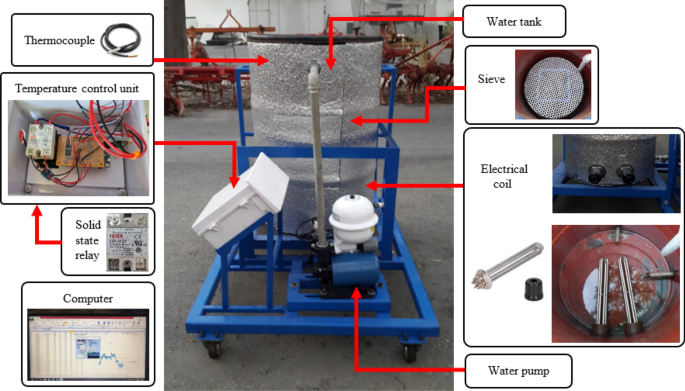Are Products From Sugarcane Scalable for Mass Manufacturing?
Discover the Ingenious Advantages of Products From Sugarcane for Lasting Living
Sugarcane has emerged as an essential resource in the mission for sustainable living. Its diverse applications extend eco-friendly packaging, sustainable power, and much healthier food choices. As industries seek green choices, sugarcane's convenience offers encouraging services. The true potential of sugarcane prolongs past its current usages. Discovering its innovative benefits might expose new pathways toward a more sustainable future. What various other opportunities might this exceptional plant hold?

The Rise of Sugarcane as a Lasting Resource
As worldwide understanding of environmental problems expands, sugarcane has become a prominent sustainable source. This versatile crop provides a variety of benefits that add to eco-friendly practices. Sugarcane is a sustainable source, qualified of thriving in diverse environments while absorbing carbon dioxide, therefore minimizing greenhouse gas emissions. Its quick growth cycle permits regular harvesting, leading to a continuous supply of raw material.Additionally, sugarcane cultivation frequently requires less water compared to other plants, making it an effective option in water-scarce regions. The spin-offs of sugarcane, such as bagasse and molasses, can be repurposed for numerous applications, minimizing waste and promoting round economic situation principles. Improvements in farming methods have led to more lasting farming methods, further boosting sugarcane's ecological account. As consumers significantly look for lasting choices, sugarcane stands out as a feasible choice for those committed to minimizing their ecological footprint.
Biodegradable Product Packaging Solutions
Just how can biodegradable packaging solutions transform the method consumers come close to sustainability? By using sugarcane-based materials, these cutting-edge remedies offer a compelling choice to typical plastics. Naturally degradable packaging made from sugarcane breaks down normally, significantly reducing landfill waste and greenhouse gas emissions. As consumers become increasingly familiar with their environmental influence, the demand for lasting packaging continues to rise.These sugarcane-derived items not just offer useful objectives however also align with eco-conscious customer worths. They provide a substantial method for businesses and people to add to a circular economic climate, promoting source efficiency and lessening environmental footprints. Furthermore, as sectors adopt biodegradable choices, they foster a culture of sustainability that resonates with an expanding group looking for accountable choices.In essence, biodegradable packaging solutions from sugarcane stand for an important step forward in sustainable techniques, equipping customers to make eco-friendly decisions without compromising benefit or quality.
Renewable Resource Generation From Sugarcane
A considerable portion of renewable resource generation can be acquired from sugarcane, showcasing its adaptability beyond typical agricultural usages. Sugarcane biomass, consisting of bagasse and leaves, is a powerful resource for bioenergy manufacturing. This biomass can be transformed into biofuels such as ethanol, which acts as a cleaner choice to fossil fuels. In addition, the burning of sugarcane results generates heavy steam and electrical power, giving a power source for sugar mills and close-by communities.The growing of sugarcane also adds to carbon sequestration, as the plants soak up carbon dioxide during their development cycle. By using sugarcane for power, waste is minimized, and sustainable techniques are encouraged. This renewable energy approach not only supports power demands yet also advertises rural advancement, producing jobs in bioenergy sectors. Overall, sugarcane stands apart as a principal in the change to lasting power options, lining up with global efforts to reduce carbon footprints.

Eco-Friendly Textiles and Fabrics
Environmentally friendly textiles and textiles stemmed from sugarcane provide a promising choice to conventional products. These eco-friendly alternatives not just minimize ecological effect but likewise offer longevity and performance comparable to conventional textiles. Lasting manufacturing procedures additionally enhance their allure, making them an integral part of a lasting way of life.
Eco-friendly Textile Alternatives
Why is the change toward biodegradable textile options important for lasting living? The boosting awareness of ecological destruction has triggered a search for options to traditional fabrics, which typically add to air pollution and waste. Naturally degradable materials, acquired from eco-friendly resources such as sugarcane, supply a promising option. These materials decay naturally, decreasing land fill accumulation and reducing ecological impact. Additionally, they can aid lower carbon footprints and dependence on fossil gas. As consumers become much more eco-conscious, the need for sustainable fabrics expands, encouraging manufacturers to innovate and spend in naturally degradable alternatives. This modification not only sustains sustainable practices but likewise cultivates a round economic climate, paving the means for an extra liable strategy to style and textile manufacturing.
Toughness and Performance
When assessing environmentally friendly textiles and fabrics, toughness and efficiency are important factors. Sugarcane-derived products demonstrate excellent stamina and resilience, making them appropriate for numerous applications. These textiles frequently display superior moisture-wicking homes, which boost convenience in everyday wear. In addition, their natural fibers add to breathability, making sure that garments remain fresh and wearable even popular conditions. The efficiency of sugarcane-based textiles includes their resistance to tear and use, allowing items to maintain their integrity over time. More about the author Moreover, these environment-friendly fabrics can be dealt with to improve UV protection and tarnish resistance, satisfying the useful requirements of consumers without endangering sustainability. Eventually, sugarcane textiles provide an unified equilibrium of toughness and efficiency, interesting ecologically conscious individuals.
Lasting Production Processes
The excellent durability and efficiency of sugarcane-derived textiles are complemented by sustainable manufacturing procedures that prioritize ecological responsibility. These procedures utilize eco-friendly resources, reducing reliance on nonrenewable fuel sources and lowering carbon footprints. By using the spin-offs of sugarcane farming, suppliers can create environmentally friendly materials while advertising waste reduction. Advanced methods, such as water-efficient dyeing and biodegradable therapies, further improve the sustainability of these fabrics. In addition, using non-toxic chemicals guarantees that the manufacturing process does not hurt ecological communities or human health and wellness. This commitment to sustainability not only interest eco aware consumers yet likewise sustains neighborhood economic situations by advertising sustainable farming techniques. In general, sugarcane-derived textiles stand for a significant step towards a greener future in the apparel industry.
Sugarcane-Based Biofuels and Their Influence

Sugarcane-based biofuels have arised as a substantial alternate power resource, using a renewable option to the globe's expanding energy demands. These biofuels, originated from the fermentation of sugarcane juice or molasses, offer an even more lasting alternative compared to fossil fuels. Their manufacturing process creates reduced greenhouse gas exhausts, adding to climate adjustment mitigation efforts.Additionally, sugarcane biofuels can boost energy protection by diversifying power resources and lowering reliance on imported oil. The farming of sugarcane likewise advertises country advancement, producing jobs and boosting local economies.However, issues relating to land use and food competition continue, as raised biofuel manufacturing may affect food supply chains. Lasting agricultural methods are essential to stabilizing these contending rate of interests and guaranteeing that biofuel manufacturing does not threaten food protection. Overall, sugarcane-based biofuels represent an appealing method for a greener power future, supplied that their environmental and social implications are very carefully handled.
Much Healthier Alternatives: Sugarcane in Food Products
While many customers look for healthier alternatives in their diet regimens, sugarcane items offer a healthy alternative to improved sugars and sweetening agents. Stemmed from the all-natural removal of sugarcane juice, these products maintain vital nutrients, consisting of minerals and vitamins, that are typically lost in refined sugars. Sugarcane contains anti-oxidants and dietary fiber, contributing to overall health and wellness and wellness.Many health-conscious individuals are turning to sugarcane syrup and jaggery, which give a lower glycemic index compared to conventional sugars, making them appropriate for those managing blood glucose degrees. In addition, sugarcane-derived sugar can boost the flavor of different recipes without the unfavorable impacts related to man-made additives.This change towards natural artificial sweetener not only advertises better nutritional choices yet likewise lines up with lasting living practices, as sugarcane is a sustainable source. As a result, sugarcane items are becoming favorable options in the domain name of foodstuff.
The Future of Sugarcane in Lasting Innovations
The future of sugarcane is positioned to encompass cutting-edge applications that prolong past traditional usages. Its possible as a source for eco-friendly packaging services article and sustainable power resources highlights its function in sustainable practices. Checking out these developments could substantially impact environmental conservation and resource administration.
Naturally Degradable Packaging Solutions
A boosting number of companies are transforming to biodegradable packaging services stemmed from sugarcane as an encouraging option to conventional plastics. These ingenious products, frequently made from sugarcane fibers and bioplastics, decay normally, minimizing the long-lasting ecological influence connected with conventional plastic waste. By making use of renewable energies, sugarcane-based product packaging adds to a much more sustainable production cycle, aligning with international efforts to fight air pollution and climate adjustment. Additionally, these services usually maintain the sturdiness and performance required for various applications, from food containers to shipping materials. As consumer demand for eco-friendly options expands, companies embracing sugarcane packaging not just enhance their brand name image next page yet additionally play an essential role in promoting a circular economic situation, leading the means for a greener future.
Renewable Power Resources
Biodegradable packaging remedies are simply one facet of the more comprehensive potential of sugarcane in advertising sustainability. Another substantial application hinges on eco-friendly energy sources. Sugarcane is a flexible crop that can be used to produce biofuels, such as ethanol, which offers as a cleaner choice to nonrenewable fuel sources. The fermentation process of sugarcane juice returns ethanol that can power lorries and produce power. In addition, the byproducts of sugarcane handling, like bagasse, can be used to produce biomass power, using a effective and sustainable approach to harness power. This dual role as both a resource of biofuel and biomass emphasizes sugarcane's potential in minimizing carbon discharges and sustaining a change to a much more lasting power landscape in the future.
Regularly Asked Questions
Exactly How Is Sugarcane Collected Sustainably?
Sugarcane harvesting can be lasting through methods like manual cutting, which decreases soil disturbance, and utilizing equipment that minimizes gas intake (Products From Sugarcane). Crop rotation and incorporated bug administration additionally enhance environmental health and wellness and promote long-lasting dirt fertility
What Are the Environmental Effects of Sugarcane Farming?

Can Sugarcane Products Be Reused?
The question of whether sugarcane products can be reused exposes a favorable expectation. Several sugarcane-derived materials, such as bioplastics and packaging, are designed for recyclability, adding to a more sustainable waste management technique within environmental considerations.
Exist Any Drawbacks to Utilizing Sugarcane-Based Products?
The drawbacks of making use of sugarcane-based items include prospective land usage competition with food crops, difficulties in large-scale production, and worries about the ecological effect of monoculture farming techniques, which can reduce biodiversity and soil health and wellness.
Exactly How Does Sugarcane Cultivation Affect Resident Communities?
Sugarcane cultivation impacts neighborhood neighborhoods by giving employment possibility and enhancing regional economic climates. It can also lead to land disagreements and environmental worries, impacting farming methods and community wellness, demanding a balanced method to growth. Developments in agricultural methods have led to even more sustainable farming techniques, further boosting sugarcane's environmental account. Furthermore, the burning of sugarcane byproducts generates steam and electricity, supplying a power resource for sugar mills and close-by communities.The farming of sugarcane additionally adds to carbon sequestration, as the plants soak up carbon dioxide throughout their growth cycle. By using sugarcane for energy, waste is reduced, and sustainable methods are urged - Products From Sugarcane. Sugarcane includes anti-oxidants and nutritional fiber, contributing to general health and wellness.Many health-conscious people are transforming to sugarcane syrup and jaggery, which give a lower glycemic index compared to conventional sugars, making them appropriate for those taking care of blood sugar degrees. Additionally, the results of sugarcane handling, like bagasse, can be made use of to produce biomass power, using a reliable and sustainable approach to harness power